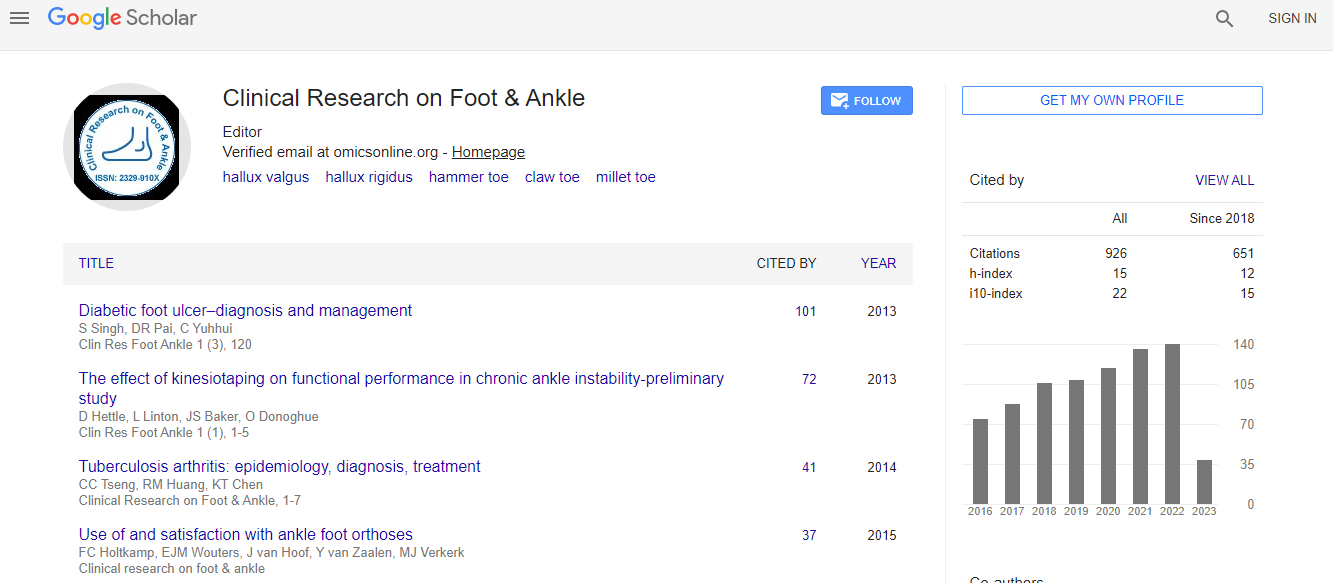Research Article
Double Column Foot Osteotomy to Correct Flexible Valgus Foot Deformity in Children with Spastic Cerebral Palsy
Sherif Bishay*, George Magdy Morshed, Yehia Tarraf and Naguib Pasha
National Institute of Neuromotor System of Imbaba, General Organization of Teaching Hospitals and Institutes, Egypt
- *Corresponding Author:
- Sherif Bishay
Assistant Professor of Orthopaedic Surgery
National Institute of Neuromotor System of Imbaba
General Organization of Teaching Hospitals and Institutes, Egypt
Tel: 00202-37604539/0020122-3118518
E-mail: sherifbishay@outlook.com
Received date: Jul 20, 2016; Accepted date: Aug 09, 2016; Published date: Aug 20, 2016
Citation: Bishay S, Morshed GM, Tarraf Y, Pasha N (2016) Double Column Foot Osteotomy to Correct Flexible Valgus Foot Deformity in Children with Spastic Cerebral Palsy. Clin Res Foot Ankle 4:198. doi: 10.4172/2329-910X.1000198
Copyright: © 2016 Sherif Bishay, et al. This is an open-access article distributed under the terms of the Creative Commons Attribution License, which permits unrestricted use, distribution, and reproduction in any medium, provided the original author and source are credited.
Abstract
Backgound: Mobile (flexible or correctable) hindfoot valgus deformity is common in children with spastic cerebral palsy (CP). It is accompanied by short lateral and long medial foot column.
Patients and Methods: Eleven ambulatory children (20 feet) suffering spastic cerebral palsy (CP), two hemiplegic and nine diplegic, presenting with mobile (flexible) hindfoot valgus deformity, were evaluated neurologically, orthopaedically, and radiographically, and operated upon in the National Institute of Neuromotor System between September 2012 and September 2013. Double column foot osteotomy with medial cuneiform closing-wedge and cuboid opening-wedge without attacking the calcaneus was performed in all of them.
Results: The results were followed-up clinically and radiographically over a period ranging from a year and half (18 months) to two years (24 months) with an average of a year and 9 months (21 months), and were graded into four categories as excellent, good, fair, and poor according to the total calculated score. According to the suggested grading system, there were 8 excellent results, 8 good results, 4 fair results, and no poor results.
Conclusion: Double column foot osteotomy shortening the medial foot column and lengthening the lateral foot column to correct moderate to severe hindfoot valgus in ambulatory children with spastic cerebral palsy (CP), compared favourably with similar series, and offered option for achieving foot alignment, improving pain and skin problems and avoiding the problems associated with arthrodesis. Level of Evidence: The study is type IV therapeutic level of evidence.

 Spanish
Spanish  Chinese
Chinese  Russian
Russian  German
German  French
French  Japanese
Japanese  Portuguese
Portuguese  Hindi
Hindi 
